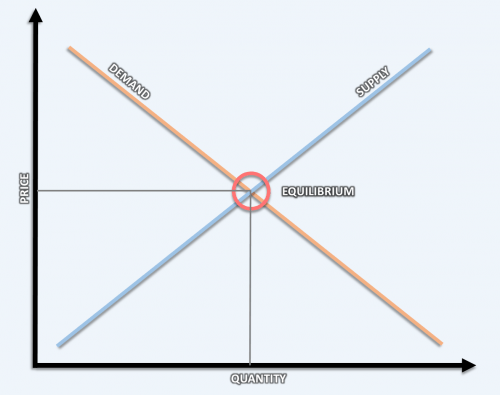Balancing Supply and Demand

Supply and Demand refer to the balance of what a business can deliver and what the target market wants. There are several variables which can affect this equilibrium – the main factors being Price and Quantity.
The selling price of a service or product will be pre-determined by how much suppliers will charge you to produce and deliver the sale. It also depends on how necessary your product or service is to your market. If the supplier price changes, so will your selling price, and if it were to increase, then your customer’s demand may fall. This is the same case for quantity; Create too much supply when demand is low, and this will result in excess inventory leading to a loss profits (you would be holding unsold stock or resources). It is also worth noting that demand can be very high and therefore exceed the quantity that’s provided, causing a loss of potential sales.
Getting the right price and quantity requires the perfect balance between who supplies you with the means to sell and how much is demanded by your market.
Get the Right Measures in Place
Getting the perfect balance called Equilibrium between supply and demand requires certain measures in place beforehand to accurately understand your market.
Research your market. Is it Business to Business (B2B) or Business to Consumer (B2C)? Research who has been buying your product/service, what their demographics are. Find out whether they need your product or service, or if it’s purchased just out of interest. This means that the customer does not consider the product or service as a necessity but is still willing to purchase it. Research future demand through surveying existing markets first, then research the possible alternate markets for growth.
Secondly, understand your suppliers. Take care of your suppliers or anyone who is involved in delivering/producing your product or service. This can be your workforce too. Develop good relations as this will help with negotiations and motivation. Allowing you to anticipate any changes that might occur.
How to Adapt to Change
If you understand how important your product or service is to your customers, then you know how to adapt your price and quantity when supplier costs change. It may be that your pricing strategy is Penetration Pricing; – providing a cheaper offering than competitors. It may be the sole reason why you sell well, so if costs were to increase, your selling price increases. The further this increases the less likely customers will purchase your product as alternatives may be more competitive.
The situation may be different if your product or service is considered a necessity for your market. In this case, it’s likely if the price were to change then your market will continue purchasing your product or service. This is due to the value of the service or product exceeding its price point. Therefore, your market will value your service or product offering more highly, trumping the selling price.
There are also be times when the selling price has not changed, but a drop in your sales has occurred. This will be due to changes which affect your market. Factors which impact your market can be economical, political, environmental, social etc. It could be that the country where most of your clients are based is undergoing recession and no longer have the flexible capital to stretch to your prices. Although your product or service is still desired, the market may no longer value your offer above other needs.
Conclusion
Understanding your market and keeping good relations with your suppliers eliminates most of the variables which are in your control. Knowing how much to sell and at what price is the key to maintaining stable sales. Variables outside your control can still affect this equilibrium and so it is vital you have knowledge of your markets values and needs. This allows for the appropriate contingency plan to be executed; -minimising the losses and securing your sales.
Written By Leyla Hussein

